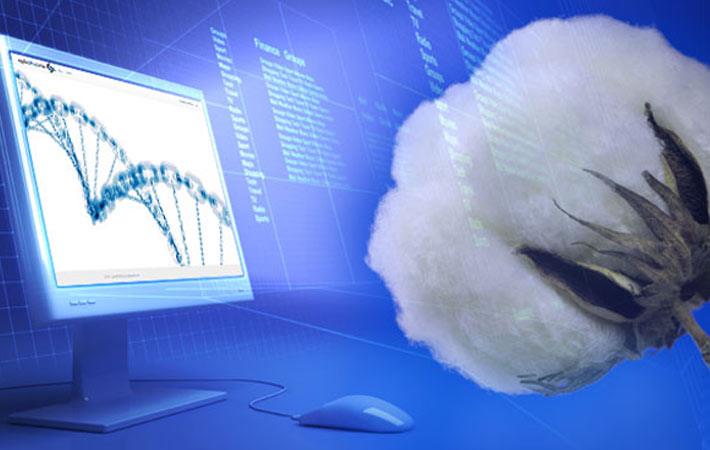SigNatureT DNA can help prevent apparel counterfeiting

SigNatureT tagging and testing helps trace finished goods to origin, and let companies ensure that their supply chain uses ethically sourced and pure raw materials.
"SigNatureT DNA includes the creation of a unique DNA molecular tag that is applied onto cotton fibre and used as a tracer from source to shelf. Think of the tag like a molecular fingerprint or barcode. It is a unique code that we create so that it binds to the fibre or product. It does not alter the quality, composition or performance of the product," James A Hayward, president and CEO of Applied DNA Sciences told Fibre2Fashion in an exclusive interview.
SigNatureT can be used to tag yarn, fabric, synthetic fibres, finished goods, labels and protective coatings. It comes from plants, is very safe, and will not alter the performance or quality of the fibre, yarn or fabric.
When asked how the new technology can help cleanse the cotton supply chain, Hayward said, "For cotton, we have multiple ways to cleanse the supply chain and help eliminate fibre substitution. Prior to tagging, we also conduct FibreTyping to verify the genetic content of the fibre. We have a digitalDNA system that allows for track-and-trace. It is a holistic solution that can help answer the question of where your cotton truly comes from, and where it is going,"
The molecular tagging technology can also be used for the prevention of counterfeiting of apparel made of synthetic materials.
"The way we tag synthetics, currently happens at the master batch pellet stage, which allows for the DNA molecule to be included as part of the extrusion into filament yarn. The difference in the application of the DNA technology is that for synthetics the DNA molecule is embedded in the fibre itself. For cotton, the DNA is applied and bound to the surface," added Hayward.
The SignatureT technology can also be used to control slave labour and ensure ethical production.
SigNatureT levels the playing field and helps to ensure a fair return to all parties of the supply chain starting with the grower all the way to the spinner, manufacturer, assembler, distributor and retailers. Because we tag at the source, we know who, where, how, and when it is done. We are also there to train and ensure the tagging follows our standard operating procedures," he said.
ADNAS also monitors all tagged fibres 24/7 through its fully automated SigNatureT DNA transfer systems. It is very accurate as it is based on forensic science.
SigNatureT is currently being piloted in other natural fibres like wool, leather, and also for synthetics. ADNAS can also tag rayon, polyester and nylon in both yarns and fabrics. (KD)
Fibre2Fashion News Desk – India
































-Ltd..jpg?tr=w-120,h-60,c-at_max,cm-pad_resize,bg-ffffff)





.jpg?tr=w-120,h-60,c-at_max,cm-pad_resize,bg-ffffff)
.jpg?tr=w-120,h-60,c-at_max,cm-pad_resize,bg-ffffff)






